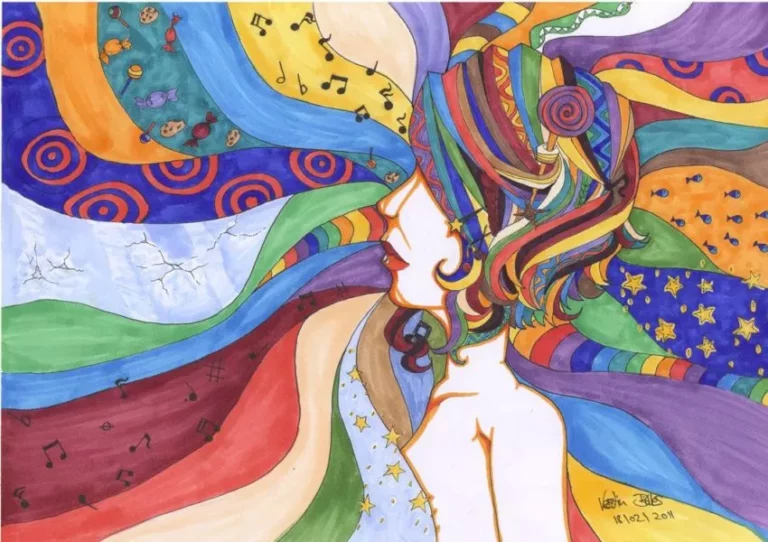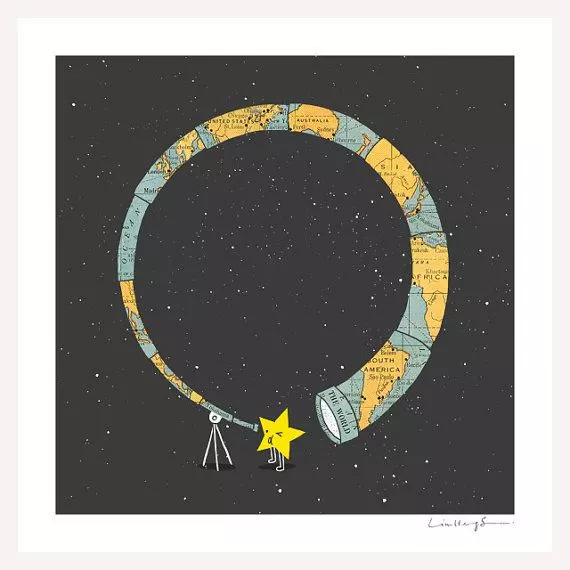“Every valuable human being must be a radical and a rebel, for what he must aim at is to make things better than they are.” ~ Niels Bohr
The Beyondman has been chosen to tame the fates. She has evolved past good and evil. He is beyond moral and immoral. The Beyondman waits with Rumi, who once said: “Out beyond ideas of wrongdoing and rightdoing there is a field. I’ll meet you there.”

She is inside us all, waiting for us to arrive. She is the anima in man. He is the animus in woman. He is altiora hominis (going beyond mankind) par excellence.
If there is a dark side, she lights it on fire. If there is a light side, he cloaks it in shadows. She scoffs and blurs it all into a beautiful Middle Gray. He is the thunderous Gray Side of The Force, beaming darkness into the blinding light and shining light into the bleakest dark.
The Beyondman is amorally robust, tapping the cornerstone and using morality and immorality as mere steppingstones in order to reach the Philosopher’s stone.
Out beyond Rumi’s field there is a crossroads: one path leads back to the commons; the other path is jagged and unforgiving. Behold: the ever-unfolding Eightfold Jagged Path of the Beyondman…
1) The Path of Amoral Insight
“Evolution is not finished; reason is not the last word nor the reasoning animal the supreme figure of Nature. As man emerged out of the animal, so out of man the superman emerges.” ~ Sri Aurobindo
The path of amoral insight is infused with transformative Nietzschean energy, suffused with ubermensch-like undertones that shine a light on the basic nature of reality. There’s the Will to Power jutting its head over the benchmark, double-dog-daring the Beyondman to get power over power and to expiate it, lest power corrupt and absolute power corrupt absolutely.
There’s the vision of over-vision, seeing with over-eyes, looking out over the cosmic paradox with root-like understanding, heart-like intuition, and womb-like acumen. Here, there is no moral insight without amoral foresight. There is no immoral insight without amoral hindsight.
This path is the cornerstone of all paths, the Elbow of the Universe, the keystone, the root-stone forming the ever-changing, never-still, oceanic undertow of all things. The insight gained here speaks a language older than words. As Rumi advised, “There is a voice that doesn’t use words. Listen.”
2) The Path of Amoral Purpose
“When the blood in your veins returns to the sea, and the earth in your bones returns to the ground, perhaps then you will remember that this world does not belong to you, it is you who belongs to this world.” ~ Unknown
Out beyond the moral daily grind of the man-machine and the immoral tyranny that drives it, there is a purpose that throws a wrench into the machinery. Here, the Beyondman learns how to become a force of nature first a person second. This purpose is beyond production. It’s beyond destruction. It rides the wave of trial-and-error into imaginative flow states.
It’s beyond security and comfort. It’s beyond paranoia and fear. It burns eternally on the robust kindling of courage and adventure. It’s beyond prudence. It’s beyond recklessness. It turns a mirror on the people, the culture, the world and the universe, daring it to come correct.
Like Karl Frei said, “Attitude is the difference between ordeal and adventure.”
3) The Path of Amoral Discourse
“Silence is not an absence but a presence.” ~ Anne D. LeClaire
Out beyond the clanking steel and blaring car alarms of civilization, there is a silence so quiet that it’s loud. It screams from the voice box of nature. It’s God on a microphone speaking through a bullhorn. And when one is present to this sacred silence, one cannot help but listen. Here, the Beyondman learns, not only how to listen, but how to speak.
Throat chakra spinning a purple vortex of positive vibrations out into the universe. Clear, truthful, uplifting and non-violent communication with the universe. Beyond moral speech. Beyond immoral speech. The deep love of amoral speech transcends status quo, feel-good jargon and fearmongering doublespeak.
Here, joyous laughter drowns out the lower shores of men who take themselves too seriously.
Like E.E. Cummings powerfully said, “Love is the voice under all silences. The hope which has no opposite in fear. The strength so strong mere force is feebleness. The truth more first than sun, more last than star.”
4) The Path of Amoral Agency
“We don’t reach the mountaintop from the mountaintop. We start at the bottom and climb up. Blood is involved.” ~ Cheryl Strayed
We don’t reach better questions by relying on outdated answers. We start at the cliff of doubt and gaze into the abyss of uncertainty. Bloody-mindedness is involved. Out beyond ancient truths grown stale, there is an updated way of questioning to the nth degree: self-interrogation. One must question the roots of oneself before questioning the roots of things.
From this ruthless form of questioning comes the Middle Way, the infinite edged sword of the Golden Ratio slicing through all answers. Here, revolt is in order. Revolution is the solution. One must be amoral in order to alchemize the immoral into the moral.
The Beyondman’s way of being sincere with the world is to disrupt it and then give it a new form. He amorally rebels; therefore morality exists. Because the Beyondman understands, as James Russell Lowell said, that “Time makes ancient good uncouth.”
5) The Path of Amoral Mindfulness
“Stop acting so small. You are the universe in ecstatic motion.” ~ Rumi
 Out beyond poison. Out beyond medicine. Out beyond even traditional mindfulness, there is the amoral mindfulness of the No-mind, the sincere detachment to things things things. Here, the greatest generosity is non-attachment. The greatest meditation is learning to let go.
Out beyond poison. Out beyond medicine. Out beyond even traditional mindfulness, there is the amoral mindfulness of the No-mind, the sincere detachment to things things things. Here, the greatest generosity is non-attachment. The greatest meditation is learning to let go.
The greatest action is not conforming to the world but becoming the world. The ego dies in order to be reborn into soul, rising up as Individuation. The soul goes through a Dark Night of the Soul, rising up as Self-actualized. Between thoughts, between breaths, between mind and no-mind, the Beyondman goes beyond man, Promethean in the disclosure of secrets found within the many folds of the Great Mystery.
6) The Path of Amoral Overcoming
“The situation is hopeless. We must take the next step.” ~ Pablo Picasso
Out beyond the sense of self and the idea of fixed personas, there is a vicissitude so profound that it compels us to adapt and overcome. The Self sheds its skin over and over again, shattering all masks, and destroying all personas. Here, rebirth is eternally reoccurring. Wisdom sees through appearances.
Continual awareness is the greatest precept. There is no fixed state, there is only swimming. The Beyondman goes beyond man by learning how to swim through change, constantly adapting to new waves and overcoming new floods.
As Nietzsche once profoundly said, “If one has once drifted here with one’s bark, well, very good. Now let us set our teeth firmly. Let us open our eyes and keep our hand fast on the helm. We sail away right over morality. We crush out. We destroy perhaps what remains of our own mortality by daring to make our voyage thither. But what do we matter? Never yet did a profounder world of insight reveal itself to daring travelers and adventurers.”
7) The Path of Amoral Destiny
“In solitude, be to thyself a throng.” ~ Tibullus by Montaigne
Out beyond the good life and the bad life, where life is just life, there is a way of being in the world that eclipses all dispositions by transforming disposition itself into a steppingstone that catapults one into a heightened state of happiness, a divine state of existential jouissance, a sacred interdependent resonance with all things. Here, love is Agape-perfect with unconditional undertones.
Unhealthy is transformed into healthy, like led into gold. Immoderation is transformed into moderation, like wine into water. Right and wrong become entangled into vines that bind time ––past-present-future–– into a ladder that is climbed with loving joy and adventurous transcendence.
With amor fati (love of fate) in one hand and arete (excellence) in the other, the Beyondman goes beyond man by being-in-fate and surfing the high wave of Eudaimonia to become one with her destiny.
8) The Path of Meta-morality
“If I can’t dance, I don’t want to be part of your revolution.” ~ Emma Goldman
Beyond worms. Beyond Gods. There is Mankind, confused and insecure, jutting his head majestically over the natural world, only to be forced over the edge of the Existential Abyss where he loses himself in despair. He is the world’s only insecure animal.
Split between spirit and flesh. But, as Werner Heisenberg said, “The reality we can put into words is never reality itself.” So the Beyondman goes beyond man by understanding that man is a hypocritical social creature addicted to mythological storylines – both healthy and unhealthy.
Out beyond morality, immorality, and even amorality, there is Joshua Greene’s Metamorality evening all scores. Out beyond stories of “truth” and other stories of “truth,” there is the Story of Truth that is infinitely unfolding, despite the petty opinions of man.
With Brezsny’s “Hate hatred but don’t hate the haters” in one hand, and Guy Harrison’s “Hate the belief, love the believer” in the other, the Beyondman sails the breakwaters of Amorality over the lowly waves of immorality and morality, flattening the surface of each so that reflection becomes a possibility, and the Story of Truth can be read with a clarity that isn’t drowned out by fear and trepidation.
The Jagged Path is for everybody and nobody. It’s for everybody who seeks to question. It’s for nobody who seeks to rely on answers. It’s for everybody who seeks transformation. It’s for nobody who wishes to remain the same. It’s for everybody who seeks to evolve beyond man. It’s for nobody who wishes to devolve into stagnant man.
The Jagged Path is the path between paths, the perpetual crossroads beyond notions of moral and immoral, where the Golden Mean of amorality beams like a mighty beacon over the evolutionary landscape of the human leitmotif.
Image source:
Time of War by Olivier Valsecchi
Stardust & Angel Wings by Ludovic Florent
Dance photography by Sean Higgins




















 And when combined with the open-ended quest of knowing thyself, these flow states take the quest into entirely new realms of self-introspection. You become receptive to stimuli to which, in the time before, you were insensate.
And when combined with the open-ended quest of knowing thyself, these flow states take the quest into entirely new realms of self-introspection. You become receptive to stimuli to which, in the time before, you were insensate.

 Having an open relationship and communication with each child is the most important thing that can be done for them.
Having an open relationship and communication with each child is the most important thing that can be done for them.



